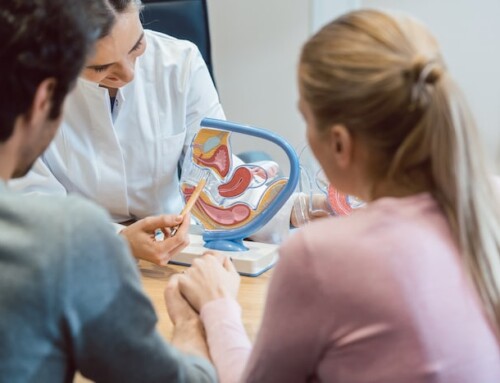Team Miracle at Cyprus IVF Centre has been practising fertility medicine for over 10 years. During this time we have monitored all the latest developments in the complicated world of IVF, and kept abreast of all facts and figures to have emerged from the studies that have been done.
Whilst reproductive medicine has come on in leaps and bounds for the last four decades, we have noticed that one of the most exciting advances has just happened over the last few years. Scientists are always seeking ways to improve the pregnancy rate from IVF treatment – and now it seems that they may have found a new way of doing just that.
The very first IVF baby was born in 1978. Back in those early days, the general thinking was that the more embryos transferred, the better and the earlier the better too; in order to get them where they should be as quickly as possible. It’s a logical idea and one which was used as standard during early IVF. However since then a lot of research has been done, and something that Team Miracle find very exciting has emerged.
Whilst there is no hard and fast rule that can be applied to every patient, studies are showing that in certain groups of women a successful pregnancy can be more likely to happen if a blastocyst, rather than an embryo, is transferred to the uterus.
What’s the difference between an embryo and a blastocyst?
Put simply, a blastocyst is an embryo that is a few days older and has developed more. The embryo will reach the blastocyst stage five days after fertilisation. It may not seem like a logical idea to keep an embryo in the laboratory environment for longer than necessary, but studies show differently.
Why is better to transfer a blastocyst?
There are lots of reasons why a later transfer can be better than an early one.
- The fact that it has survived for five days suggests high quality and therefore a higher chance of implantation.
- Younger embryos sometimes don’t develop until day 5 and their outcome is harder to predict. By the fifth day of development, the weaker embryos have stopped developing. It’s a case of “survival of the fittest”.
- It might seem an odd idea, but waiting to transfer actually means that the uterus is more prepared. In non-IVF reproduction, an embryo that is 2-3 days old will still be in the fallopian tubes, not the uterus. Therefore, a later transfer mimics the way that the body would work naturally.
- There is more time for the endometrium (lining of the uterus) to develop and reach the desired 10mm – 12mm triple-layered thickness prior to the embryo transfer. This gives a much higher chance of implantation and subsequent pregnancy.
- Doctors are more able to tell an abnormal embryo if it is further developed. And with women over forty having 75% of abnormal eggs, this is an important consideration.
- Preimplantation genetic diagnosis (PGD) can be performed on embryos if they are allowed to develop to blastocyst stage. This allows the detection of genetic abnormalities and gender and removes the need for a potentially risky amniocentesis.
However, despite this scientific advance and high pregnancy success rates, blastocyst transfer won’t become the standard IVF treatment for all patients at the Cyprus IVF Centre. This is because some embryos won’t make it to day 5 in the lab and it’s obviously better to transfer a younger embryo than none at all.
How many blastocysts?
In the past, clinics might transfer four, day-three embryos, now this is unlikely to happen. Instead, Team Miracle offer all patients the option to transfer a four blastocyst embryos for no extra cost.
The very latest evidence shows that the likelihood of pregnancy increases in correlation with the number of embryos that are transferred. Under UK regulations, the HFEA’s main aim of avoiding multiple pregnancies remains a real issue for patients trying to conceive. Clinics will only transfer one single embryo in the majority of cases. They have to keep the number of multiple births to a minimum in order to meet government targets. Team Miracle at Cyprus IVF Centre are not subject to these rules and therefore we can transfer up to four blastocyst embryos. Our primary aim is to ensure that patients get pregnant. After all, that is why people embark upon the IVF journey and our view is that twins are better than no babies at all. However, with that being said, our doctors always try to minimise the chance of a multiple births (unless the patient specifically wants multiples) as a single pregnancy is always the healthiest option for both mother and child.
Blastocyst transfer allows for both better control over outcomes and more informed choices. The five-day culture technique allows our doctors to determine more accurately which embryos have a good chance of resulting in a live birth, plus the uterus will have had a chance to recover from the hormone treatments given in preparation for harvesting eggs.
Finally, it is worth considering that blastocyst transfer may not leave you with as many – or in fact, any – embryos to freeze. However, transferring blastocyst embryos is always more beneficial than transferring day 2 or 3 embryos and saving some for freezing.
The choices and techniques can seem overwhelming for the uninitiated but Team Miracle at the Cyprus IVF Centre is highly skilled and experienced in quality control and correct culturing techniques. We will be able to offer advice and support at every single stage of your IVF journey.






